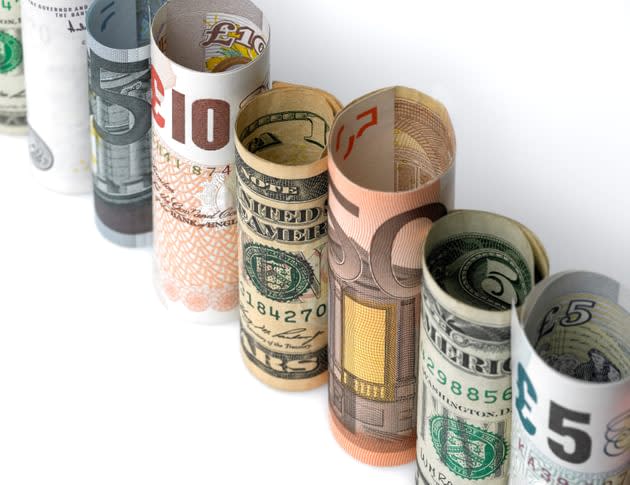Will China’s Trade Data Catch Trump’s Eye?

Earlier in the Day:
Economic data released through the Asian session was on the heavier side, with key stats including June Business PMI numbers out of New Zealand, China’s trade figures for June and finalized May industrial production figures out of Japan, while later in the day new loan numbers out of China will also be of influence.
For the Kiwi Dollar, June’s Business PMI showed that the manufacturing sector expanded at a slower pace in June, the PMI easing from 54.5 to 52.8, which was also the lowest level of monthly expansion since December 2017’s 51.0.
The production sub-index fell from 53.4 to 51.8, while new orders expanded at a quicker pace, rising from 56.7 to 57.1, suggesting that production may see a pickup in the coming months. Mixed figures, following the NZIER Quarterly Survey of Business Opinion (QSBO) that reported a dip in new orders does leave some uncertainty over what lies ahead.
A further contraction in the employment sub-index supported the QSBO numbers, which will be a concern for the RBNZ.
The Kiwi Dollar moved from $0.67714 to $0.67676 upon release of the figures before recovering to $0.6775 at the time of writing, down 0.10% for the session, the Kiwi Dollar weighed by the morning’s stat, while finding some support as risk appetite continued to return to the markets.
Things were better for the Aussie Dollar, which was up 0.15% to $0.7419.
Out of China, China’s USD trade surplus widened from $24.92bn to $41.61bn, which was far better than a forecasted widening to $27.5bn.
Year-on-year, exports rose by 11.3%, coming in ahead of a forecasted 10.2% rise, following May’s 12.6% increase.
Year-on-year, imports rose by 14.1%, falling short of a forecasted 22% increase, following May’s 26% rise.
For the Japanese Yen, industrial production fell by 0.2% in May, month-on-month, which was in line with prelim numbers, while partially reversing April’s 0.5% increase. Year-on-year, production rose by 4.2%.
The Japanese Yen moved from ¥112.628 to ¥112.633 against the Dollar upon release of the figures, to leave the Yen down 0.07% for the session.
In the equity markets, it was a mixed start to the day, with the Nikkei up 2.10% at the time of writing, while the ASX200 saw red, down 0.05%. For the Hang Seng and CSI300 the pair were heading for a positive end to the week, with gains of 0.58% and 0.49% respectively at the time of writing, driven by trade figures out of China and hopes that the U.S and China can find common ground at the negotiating table to bring an end to the trade war that has barely started.
The Day Ahead:
For the EUR, key stats through the morning are limited to finalized inflation figures out of Spain and the Eurozone that are unlikely to have a material impact on the EUR, with the ECB unlikely to be adjusting its outlook on policy, a continued lack of inflationary pressure avoiding any need to begin considering adjusting policy towards interest and deposit rates over the remainder of the year.
At the time of writing, the EUR was down 0.10% to $1.1660, with risk sentiment and Eurozone inflation numbers the key drivers through the day.
For the Pound, it’s another quiet day on the data front, with no material stats scheduled for release, while BoE MPC member Cunliffe could provide some direction should there be any forward guidance on policy, the markets having been eyeing an August rate hike before recent political uncertainty muddied the waters.
At the time of writing, the Pound was down 0.22% to $1.3177, with Brexit and political uncertainty bringing $1.30 levels back into play, with Trump’s views on a free trade agreement should Britain go through a soft Brexit also weighing.
Across the Pond, key stats through the day include June import and export price figures along with prelim July consumer sentiment numbers.
Focus will be on consumer sentiment numbers for July, with forecasts pointing to a pickup in July that would ease concerns of a negative impact from the fears of a full blown trade war hitting domestic consumption, solid nonfarm payrolls and positive economic indicators likely to support consumer spending through the early part of the 3rd quarter.
Outside of the data, FOMC member Bostic is scheduled to speak, which will unlikely have a material influence on the Dollar, with Trump continuing to garner much of the market’s attention, trade war and NATO chatter likely to be hitting the news wires through the day.
At the time of writing, the Dollar Spot Index was up 0.05% to 94.871, with consumer sentiment numbers and the Oval Office the key drivers through the day.
For the Loonie, there are no material stats scheduled for release out of Canada, leaving the Loonie in the hands of market risk appetite and the direction of oil prices, though there is always the risk of the U.S administration slapping Canada with more tariffs, which would overshadow any positive sentiment following the BoC’s forward guidance on policy on Wednesday.
At the time of writing, the Loonie was down 0.06% to C$1.3162, with trade war chatter, market risk appetite and general sentiment towards monetary policy the key drivers for the day.
This article was originally posted on FX Empire

 Yahoo Finance
Yahoo Finance